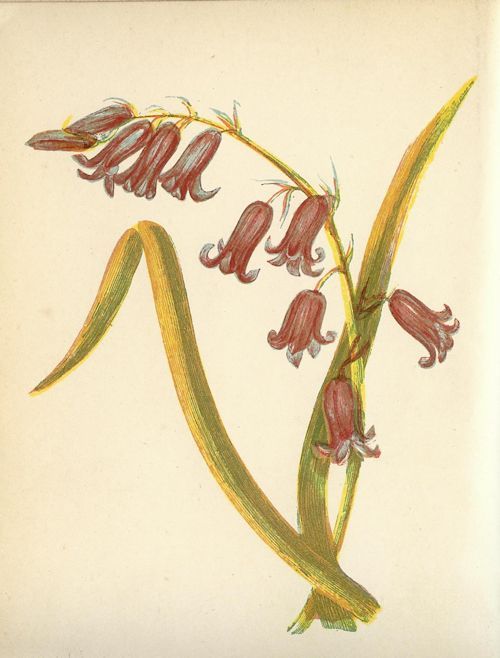|
The bluebell is the first plant illustrated. The colours are not true
in the 1902 edition I bought (seen on the right). The Charlecote 1855
edition is much more true to life. However a little colour adjustment
in PaintShop brings the blue back and it resembles the 1855 edition so
I suspect the image was true when printed but that the blue pigment used
in the 1900s was different and has faded with time. Other colours seem
unaffected.
This is what Anne Pratt has to say about the Bluebell:
Every child who has wandered in the woods, in the sweet months of April
and May, knows the Blue-Bell, or Wild Hyacinth. Scarcely a copse can be
found throughout our land which is not then blue with its flowers, for
it is to the woodland and the green lane, in spring, what the buttercup
is to the meadow. Growing near it we often find the beautiful pinkish-white
blossoms of the wood-anemone, and before it fades away the hedges are
getting white, and become fragrant with wreaths of the blooming May; but
the primroses have almost all departed, and the violets are daily more
rare.
The root of the wild hyacinth is round, and full of poisonous, clammy
juice; indeed every part of the plant gives out more or less of this juice
if we bruise it. Though the root is unfit for food, and is useless to
us now, yet in former times it was much prized. In days when very stiff
ruffs were worn, the juice was made into starch, and employed to stiffen
the linen. It served the bookbinder, too, as glue, to fasten the covers
of books. The flower has a slight scent, but the chief charms of the blue-bell
are its beauty and its early appearance. It was but lately that we looked
upon bare trees, and ground strewed with withered leaves and no songs
of joy were heard; and now the early flowers seem to say, in the language
of Scripture, “The winter is past; the rain is over and gone; the
flowers appear on the earth; the time for the singing of birds is come;
and the voice of the turtle is heard in the land.” Our wild hyacinth
is sometimes found with white or flesh-coloured flowers but the beautiful
garden hyacinths, with double blossoms, are bought from different countries
of the East.
|




